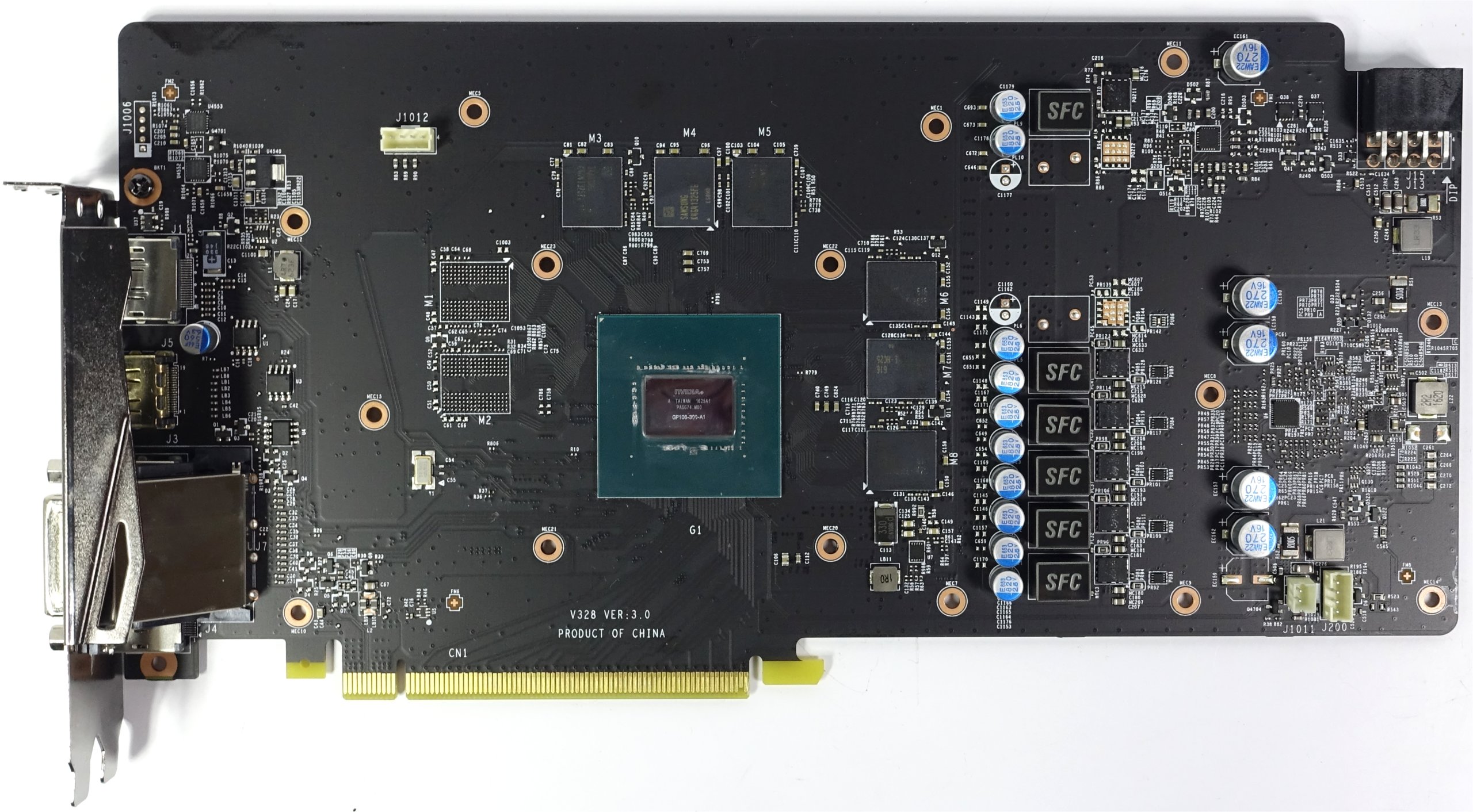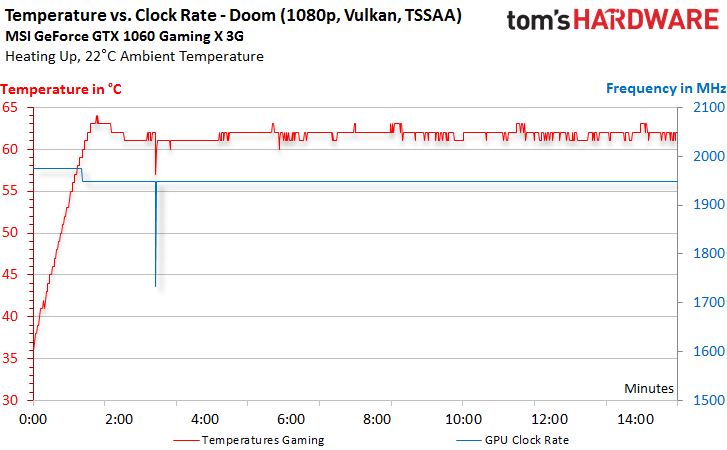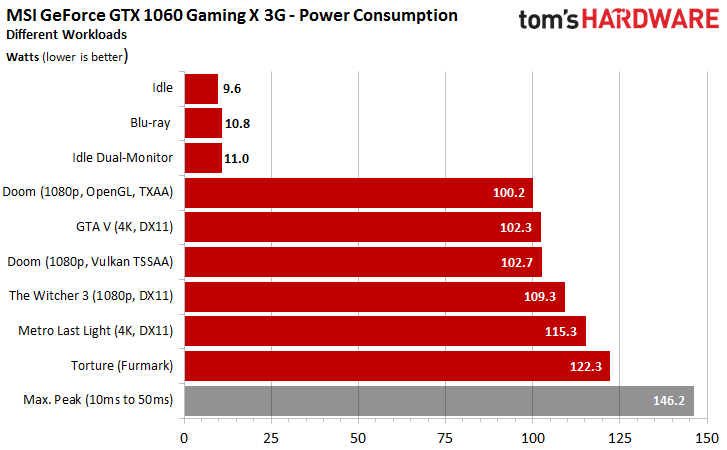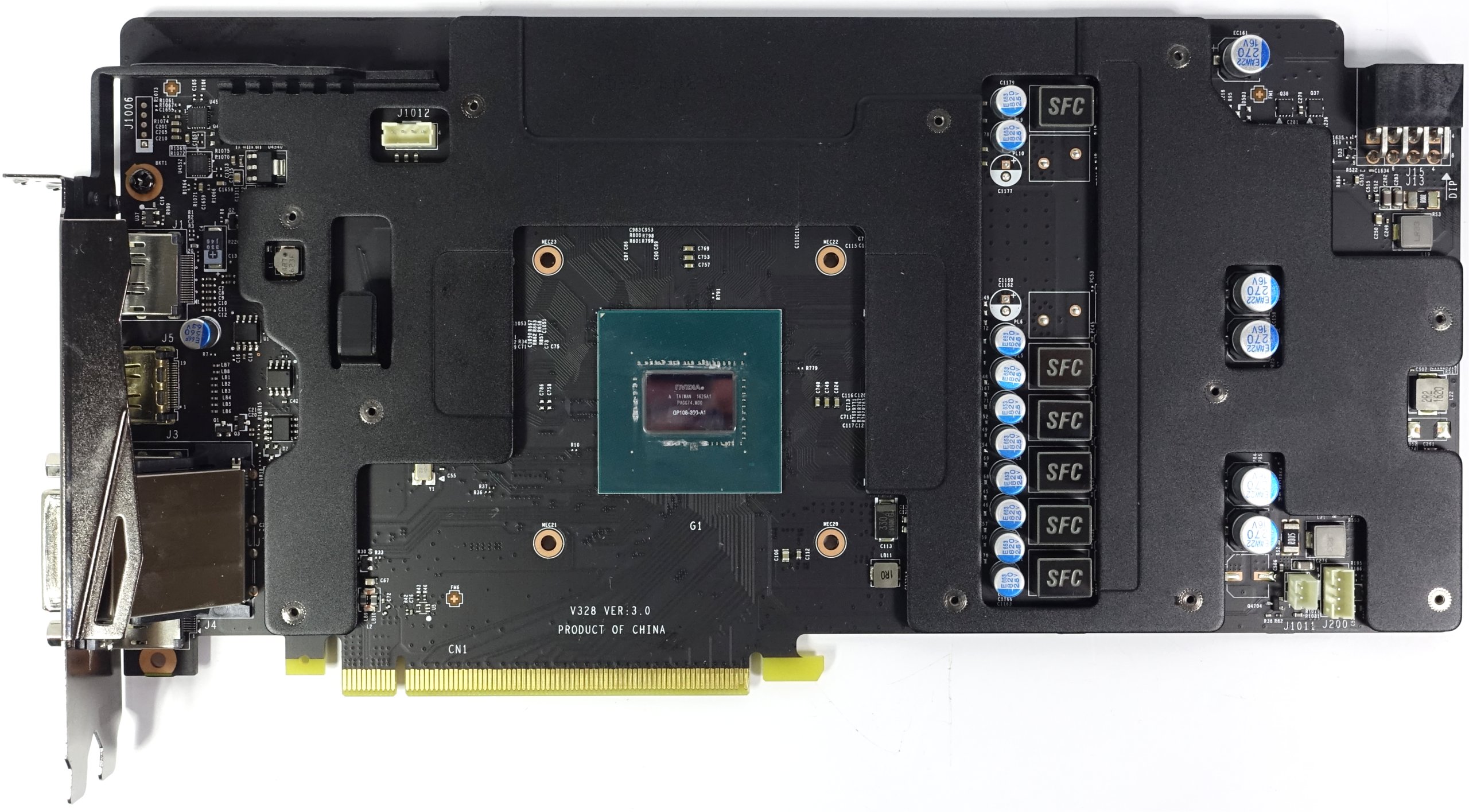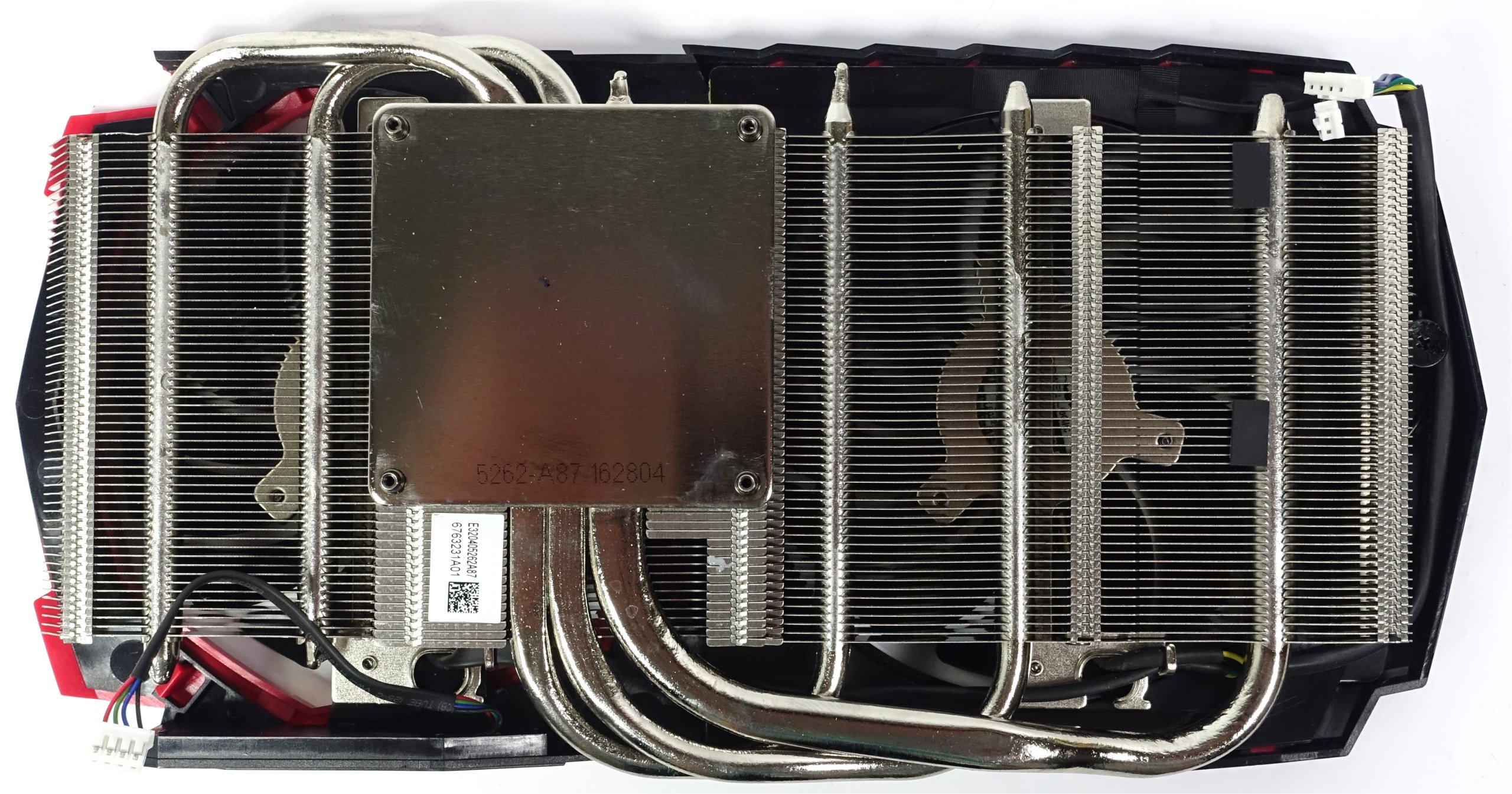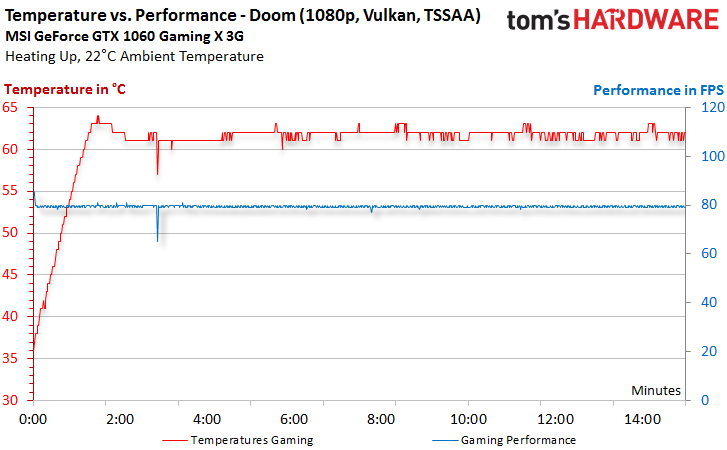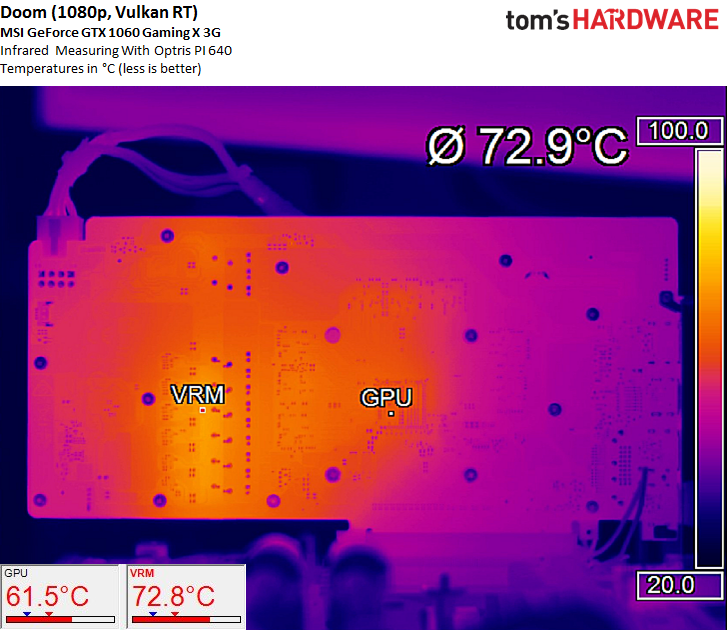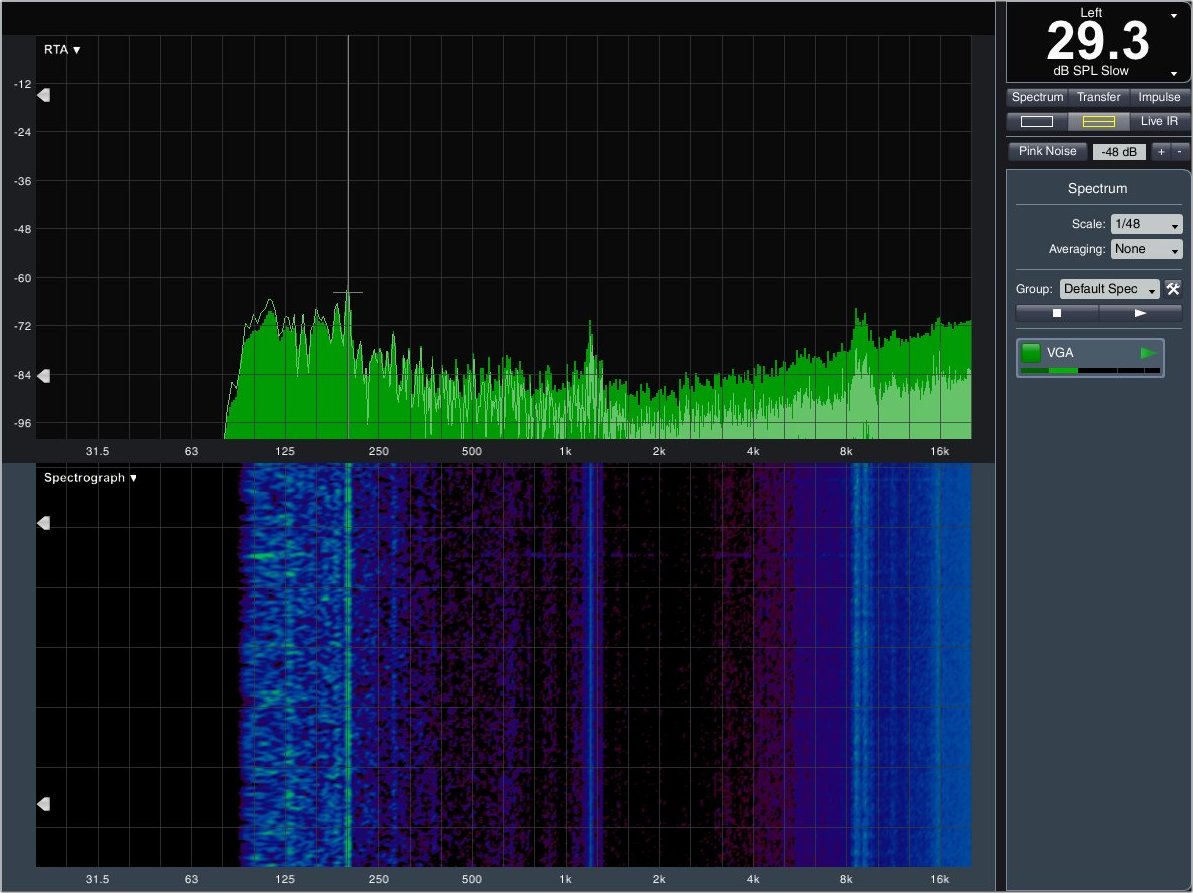Nvidia GeForce GTX 1060 Graphics Card Roundup
MSI GeForce GTX 1060 Gaming X 3G
Why you can trust Tom's Hardware
The introduction of Nvidia's GeForce GTX 1060 3GB means we all have to pay more attention to naming. Not only does this model come equipped with half as much memory, but its GPU also sports 1152 active CUDA cores instead of the 6GB version's 1280. That means GP106-300 offers exactly 10 percent less theoretical compute power than the original GP106-400. Then there's the issue of on-board RAM. A measly 3GB could prove to limit current titles, even at 1920x1080.
These cards were first introduced in Asia, which doesn't come as a surprise since the Asian market has a different focus. Cards like this GeForce GTX 1060 "Light" will find plenty of satisfied customers among the millions of MMORPG and MOBA players.
Technical Specifications
MORE: Best Graphics Cards
MORE: Desktop GPU Performance Hierarchy Table
MORE: All Graphics Content
Exterior & Interfaces
The cover above the GeForce GTX 1060 Ti Gaming X 3G’s cooler is made of relatively thin plastic. It’s similar to the shrouds used on the larger cards in MSI's Nvidia-based line-up. A massive frame under the cover keeps the card stable.
At 1001 grams, this board isn't exactly light. Incidentally, it weighs in at just two grams less than the 6GB version. You can probably attribute the difference to the memory modules used on this model, which we'll discuss shortly.
The card’s other physical attributes mirror the 6GB version. Its dimensions are 28.4 x 13.5 x 3.5cm (L x H x D), spanning two expansion slots and standing relatively tall. The circumferences of the two dual-ball-bearing fans are also the same at 9.5cm.

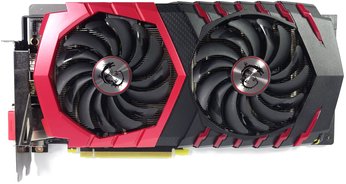
The back of the board is hidden under a plate that consists of a single large piece. It has holes to allow air circulation, but doesn’t cool the card in any meaningful way since it’s not connected via thermal pads. The plate also adds 5mm to the back of the card, which can be a deal-breaker if you're butting up against a large cooler or memory modules.
Three nickel-plated heat pipes made from composite material are observable on the bottom of the GeForce GTX 1060 Ti Gaming X 3G. The two 6mm pipes travel all the way through, transporting waste heat to both parts of the cooler.
MSI's logo on the top of the card lights up. Again, the two 6mm heat pipes make a prominent appearance, as does an 8mm pipe. The eight-pin power connector sits on the end of the card, turned by 180°.
The rear of the card is completely open. The cooler’s fins are positioned horizontally, directing airflow towards the slot cover and the rear. This design has the advantage that a lot of its heated air gets blown out the back of your chassis.
The slot cover sports five connectors, four of which can be used concurrently in a multi-monitor setup. There’s one dual-link DVI-D connector without an analog signal, joined by two HDMI 2.0 connectors and three DisplayPort 1.4 outputs.


The rest of the slot cover is mostly taken up by vents. Airflow could have been improved by omitting the largely pointless DVI connector and including an adapter instead. This would have allowed for better cooling performance.
Board & Components
A quick look at the GeForce GTX 1060 Gaming X 3G’s board proves it to be pretty much identical to the 6GB version. All five phases are powered through the auxiliary connector. The memory modules have their own phase supplied through the motherboard’s PCIe slot.
The GPU power supply’s five phases are controlled by a uP9511P made by uPI Semiconductor Corp. Dual N-channel MOSFETs in the M381 line are used for the high and low side voltage converters. This setup eliminates the need for separate gate drivers, which saves both space and money.
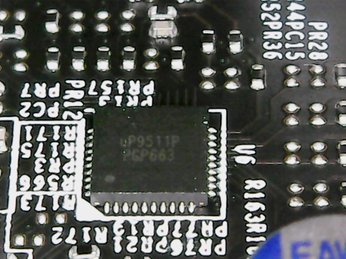
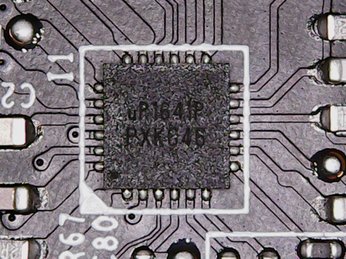
The memory’s single phase has one small uP1641P also supplied by uPI Semiconductor Corp. It’s joined by a different voltage converter, the SM7320, which is also a dual N-channel MOSFET.
MSI uses the same coils we've seen for years. Their quality is just what you’d expect from a mass-market product in this category with decent encapsulation. That's to say they're better than Foxconn’s Magic coils.

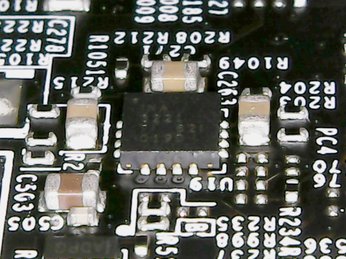
An INA1221 is in charge of the card’s power, and we'll soon see that setting a high power target through the firmware doesn’t really benefit real-world performance. This is especially true if the power target is pushed as far as MSI takes it. Nvidia implements its own internal limiter that won't let overclockers get very far.
Only six of the eight available memory emplacements are populated with Samsung K4G41325FC-HC25 modules (32x 128 Mb). Their voltages range between 1.305 and 1.597V, depending on clock rate. Altogether, this amounts to just 3GB of graphics memory.
Two capacitors are added right below the GPU to smooth out voltage peaks. This design is similar to Nvidia's reference implementation.
Power Results
First, we'll look at GPU Boost clock rates. The factory setting initially yields an aggressive 1974 MHz, though that measurement drops slightly to 1949 MHz once the card is fully warmed up.
Of course, the voltage curve dips similarly, starting at 1.062V and ending at 1.043V, corresponding perfectly to the slightly lower GPU Boost step.
While we use several games with different rendering paths and quality settings, we're only testing at one resolution: 1920x1080. Benchmarking at higher resolutions just doesn't make sense on a card with 3GB of memory.
The GeForce GTX 1060 Gaming X 3G’s power consumption at idle and low loads turns out to be very similar to the GP106-400-based card. However, differences between the two boards increase as the load goes up. Doom doesn’t use the most power this time around; that honor goes to Metro: Last Light instead. Frame rates really suffer, though. The Witcher 3 is another example of a game that doesn't run smoothly unless the quality settings are significantly relaxed.
At playable settings, gaming power consumption is much more reasonable at around 102 to 103W. We take this as an indication that 3GB of graphics memory holds the card back more than we’d like. From here on in, we’re sticking with Doom to illustrate real-world performance.
The gray bar represents power consumption based on those load peaks that made it through our filters to the smoother curve. That bar doesn't have any practical significance since the peaks we measured are too brief for them to matter (even if the shortest-duration ones were already filtered out by this point).
Power Connector Load
Next, we drill down a bit more to look at how the loads are distributed between the two different 12V rails (motherboard slot and external power connector) during the realistic gaming load and stress test. Readings of 21W during gaming and 30W during the stress test show that the motherboard slot doesn’t see a lot of usage.
This is due to the fact that the memory and board components have the motherboard slot to themselves. The GPU draws all of its power through the auxiliary power connector. Now it's easier to explain why MSI uses an eight-pin connector, even though the GeForce GTX 1060 Gaming X 3G’s power consumption remains lower than 150W during all of our usage scenarios.
Here are the corresponding graphs for gaming and our stress test. Click on them for a larger version.
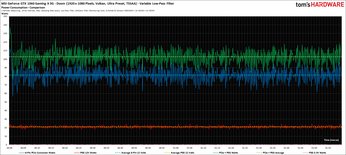

The PCI-SIG’s specifications only apply to current, meaning power consumption results on their own aren't comprehensive enough. Our readings put the motherboard slot just over 2.5A. Given a ceiling of 5.5A, this is most certainly on the safe side with lots of room to spare.
Of course, there are larger graphs for the current measurements as well.
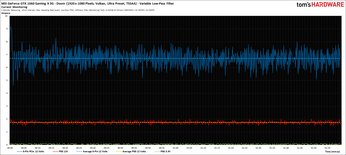

The Cooler & Its Performance
The GeForce GTX 1060 Ti Gaming X 3G’s board is sandwiched between a heavy frame on top, and the aforementioned back plate on the bottom. Since these two components are screwed together, they basically create one massive and very solid part.


The frame is also screwed to the slot cover, hiding most of the board's top. Thermal pads connect it to not just the memory modules and MOSFETs, but also the two PWM controllers and one voltage converter responsible for the card’s other components.
The cooler is identical to what we found on MSI's GeForce GTX 1060 Gaming X 6G. It’s dominated by a nickel-plated heat sink that's screwed on in a way that presses its flattened fins onto the top of the cooler’s base. MSI doesn't use a massive plate with the heat pipes pressed into it for the GTX 1060, wheres the company did for its GeForce GTX 1070 and 1080.
Our new measurement and analysis software package enables us to examine benchmark results in new ways. The graph below shows the relationship between temperature and gaming performance. The actual frame rates during our strategically-chosen test run stay consistently at 79 to 80 FPS. The only aberrations are some small spikes due to the game.
This means that the GPU Boost clock rate isn't affected by a thermal limit. We know from our other benchmarks what really holds the GeForce GTX 1060 Gaming X 3G back. We’ll see the small valley that was produced by the game in our other graphs as well. This is how synchronized the measurements have become with our new software.
The thermal reading from below the GPU's package is consistent with the sensor output from within the GPU for our gaming loop and stress test. Meanwhile, the voltage converters’ and memory modules’ temperatures are well within the green range. Right underneath the memory modules, we measure temperatures of significantly less than 70 °C, even though those components are rated for up to 85 °C. The voltage converters come in at a cool 73 °C.
During the stress test, the area around the five voltage converters reaches 75 °C, and the hottest parts of the memory modules stay below 75 °C. MSI's cooling solution does its job, that's for sure.
Sound Results
The two large fans barely spin faster than their minimum RPM. Even during the stress test, they remain below 900 RPM. From 50 cm away, this isn't really audible.
The fans don’t even spin at idle, so noise results aren't necessary. During gaming, the GeForce GTX 1060 Gaming X 3G posts 29.3 dB(A). Its profile is dominated by deeper bearing noises, whereas the actual fan noise can’t really be heard above the card’s overall soft hum.
This result, combined with the temperature results, show that the card’s cooler is larger than it needs to be. Although the cooling performance is appreciated, everything comes at a price. The question whether that price is too high segues perfectly to our conclusions.
MSI GeForce GTX 1060 Gaming X 3G
Reasons to buy
Reasons to avoid

MORE: Nvidia GeForce GTX 1080 Roundup
MORE: Nvidia GeForce GTX 1070 Roundup
MORE: All Graphics Content
Current page: MSI GeForce GTX 1060 Gaming X 3G
Prev Page Inno3D GeForce GTX 1060 Gaming OC Next Page MSI GeForce GTX 1060 Gaming X 6GGet Tom's Hardware's best news and in-depth reviews, straight to your inbox.

Igor Wallossek wrote a wide variety of hardware articles for Tom's Hardware, with a strong focus on technical analysis and in-depth reviews. His contributions have spanned a broad spectrum of PC components, including GPUs, CPUs, workstations, and PC builds. His insightful articles provide readers with detailed knowledge to make informed decisions in the ever-evolving tech landscape
-
Achaios @Igor: I really appreciate your articles. I have one small request: PLEASE consider adding benchmarks results from 3D MARK FIRESTRIKE so that we can compare your results with our GPU's. Really appreciated your "Das große Radeon RX480 Test-Roundup - Teil 1" too, though again, there are no 3D MARK FIRESTRIKE results.Reply -
bloodroses Darnit, the Zotac and Gigabyte mini models weren't covered. I was curious to see how those two compare vs. the EVGA model since I'm working with limited space inside my case.Reply -
agent88 I bought a retail MSI Geforce GTX 1060 Gaming X card last month and it was defaulted to OC mode by default. This is the same as the test version that the press received. Wondering if MSI is shipping this version to all consumers now or if I just got lucky with a "golden sample". Also, MSI provides both the MSI gaming app and afterburner software. The gaming app offers 1-click option to choose the OC mode. AReply -
shrapnel_indie Good to see a roundup... However, I think the 3GB and the 6GB belong in the same category as much as the RX-470 and RX-480 do. That is: they don't.Reply -
FritzEiv We're working on getting more cards in for all categories (1080, 1070, 1060), including from Asus, which is working on getting us cards. In fact, we'll have an update to our 1070 roundup shortly (2 new cards). And we're working on a 480 roundup as well.Reply -
mikeangs2004 Reply19457023 said:Darnit, the Zotac and Gigabyte mini models weren't covered. I was curious to see how those two compare vs. the EVGA model since I'm working with limited space inside my case.
they are kind of for the niche market just like in the days of low profile units -
Ancient1 Regarding the EVGA GTX 1060 SC :Reply
Could someone who disassemble it post the measurements ( WxHxL ) of the HEATPIPE ?? I plan on carving a Copper Heatsink, rather than Thermal Pads.
I am also thinking about HS for the memory etc , along the Pipe. But it will impact AirFlow and might degrade the HeatPipe efficiency as , to my knowledge, Heatpipe depends on temperature difference between the cooled GPU and the Heat Expelling (to the fins) areas of it.
Please post, Google will find it :)
Thanks in advance


